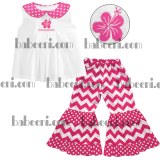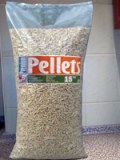What materials are used in injection moulding? Materials used in injection moulding generally include abs molding, nylon injection molding, polycarbonate injection molding, PP injection molding, PVC injection molding, HDPE injection molding, and so on. Feel free to check out the injection moulding raw material list below.
Injection Molding Raw Material List
ABS injection molding: One thermoplastic created by the material of emulsion, with a relatively low melting temperature, and resistant to corrosive chemicals.
Common Injection Material Application: Enclosures.
Acetal (POM/Delrin): One thermoplastic injection material that is resistant to liquid absorption and chemicals and used to be injection molded.
Common Injection Material Application: Bearings, bushings, dispensing components.
Acrylic (PMMA molding): One transparent polymer with excellent tensile, bending strength, less cost and comparable properties to polycarbonate.
Common Application: Clear enclosures, light and LED lights.
Polyethylene: This kind of plastic injection moulding raw materials has a low melting point, high impact strenth and low friction.
Common Injection Material Application: Bags, toys and electroinc insulation.
HDPE: One thermoplastic created from petrolum, with high tensile strength, high impact resistance, and a high melting point.
Common Injection Material Applications: Caps and enclosures.
Nylon molding: Plastic injection molding materials that are resistant to chemicals and stable at high temperatures, with high mechanical strength and rigidity.
Common Injection Material Application: Plastic injection molding automotive parts, gears, bushings.
Nylon+(0-30%) Glass-Filled: Much stiffer, greater tensile strength than standard Nylon.
Common Injection Material Application: Bearings, washers, a lightweight substitute for metals where appropriate
PEEK injection molding: Resistant to chemical, radiation and high temperature.
Common Injection Material Applications: Medical plastic injection parts, chemical processing, and aerospace parts.
Polycarbonate molding: Tough, strong, and transparent injection molding materials.
Common Injection Material Application: Automotive parts, electronic components, aerospace parts.
PC/ABS: A mixture of ABS and polycarbonate, which means to have the properties of both substrates-heat resistance and flexibility. The mixture is also easier to process during injection molding than any of the substrates.
Common Injection Material Application: Large panels, enclosures.
Polypropylene: This injection molding material has excellent chemical and electrical resistance at high temperatures.
Common Injection Material Application: Daily uses, plastic cases, medical components.
PPO: PPO plastic molding material has great electrical properties and dimensional stability.
Common Injection Material Application: Injection molding electronics components
TPE: One thermoplastic injection material can be re-melted, has the appearance and feel of a material similar to rubber. It has excellent thermal performance and stability over a wide temperature range.
Common Injection Material Application: Household appliances, automotive parts.
TPU: TPU overmolding is one elastic plastic molding material resistant to oil and abrasion.
Common Injection Material Application: Electronic parts and medical parts.
Injection Molding Materials Selection For 3D Printing
Since 3D printing is unique, a aim of chancing a perfect injection moulding raw material list to a cast, molded, or crafted material is ill- advised. Within this companion, you 'll see some charted comparisons to traditional manufacturing styles that are intended to help position set AM material prospects for certain mechanical or physical parcels.
Generally, one or two materials used in custom injection moulding distinguish an cumulative material from all others. Feting that a many parcels will separate one material from the others, the recommended approach for opting a material for 3D printing is to first define what mechanical or physical parcels are crucial and identify critical- to- quality features. Also review the material and manufacturing options to find a fit grounded on your timeline and end- use thing.
What Plastic Is Used In Injection Moulding?
Opting a suitable material for injection moulded corridor is one of the most important aspects of any engineering product design. It's vital to consider the materials used in injection moulding selection at an early stage of product design as it impacts both part functionality and drivingcost. Plastic injection molding materials is important for producing plastic factors. The process requires an injection moulding machine, mould, and raw injection material. The injection moulding machine melts the plastic, which cools inside the mould to take the shape of the finished product.The consumption of plastics used in injection moulding has increased unprecedentedly in recent times due to the global demand for consumer products.
This demand has driven companies to find new and advanced polymers to repel any operation and terrain, performing in thousands of plastics and further than 45 polymerfamilies. According to the mat web database, there are over 70000 Thermoplastics and 18000 Thermosets available to choose from, pressing the challenges faced by engineering product contrivers. Narrowing down this vast selection of common plastics for injection molding is an inviting task, so choosing a starting point is essential.
How to Determine the Types Of Plastic Used In Injection Molding?
Low-density polyethylene is used for injection molding to make bottles, plastic bags, clingfilm and playground slides. The advantage of using this plastic molding material is its moisture resistance and chemical resistance. In injection molding resins, there are two common types of polystyrene: HIPS and GPPS. GPPS are transparent while HIPS are opaque. The hard shell of the toolbox and power tool body is also made of high impact polystyrene.
Injection Molding Materials Selection
Generally speaking, injection molding materials are requested to have good gloss and surface state, and the surface roughness of the cavity is very small, thus the cavity surface must be polished, grinding and other processing. Therefore, the selection of materials used in injection moulding should not contain coarse impurities and pores.
As one of injection mold manufacturers china, we will provide more types of related products for sale, anything you need, please contact us.
Localisation : No.328 Xiaoliqiao Village, Beiyang Town, Huangyan, Taizhou, Zhejiang, China, 318024 Taizhou,
Personne à contacter : Hu Harry, 86 576 84288218








